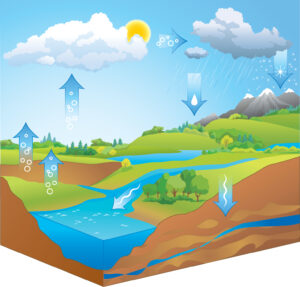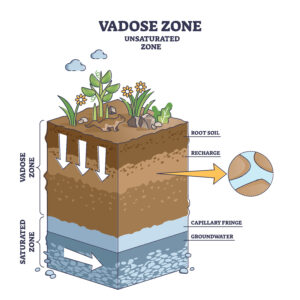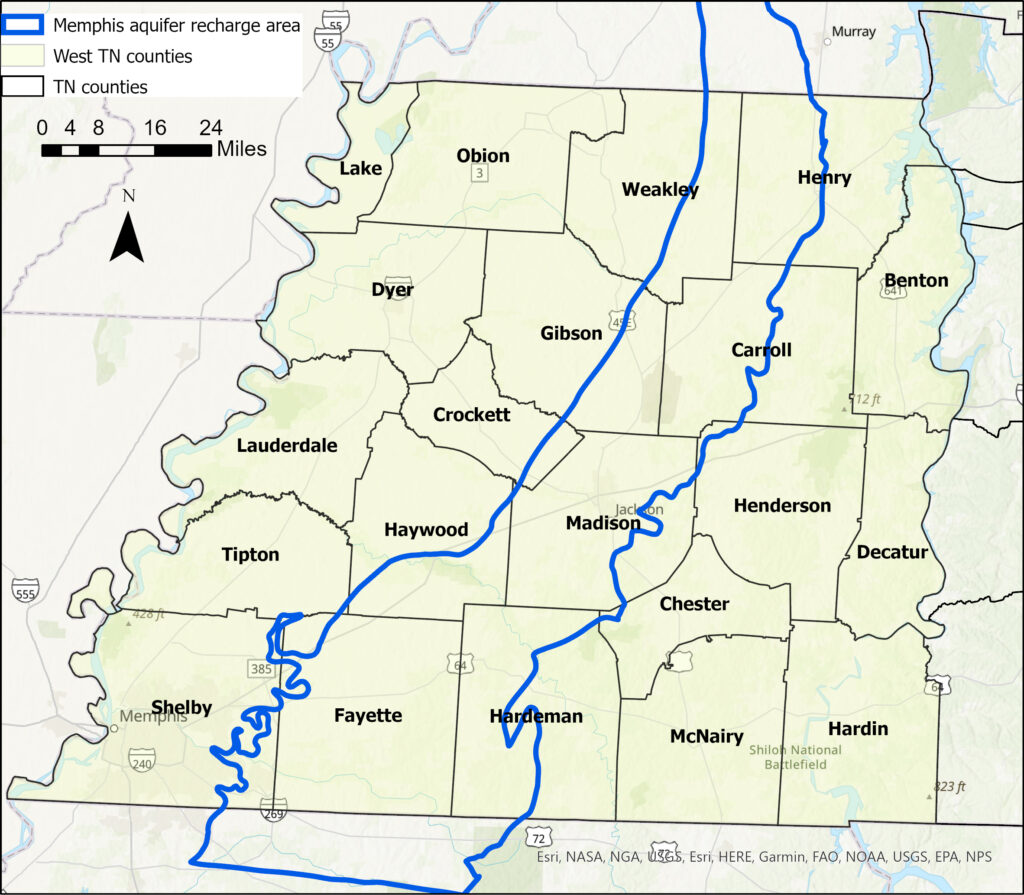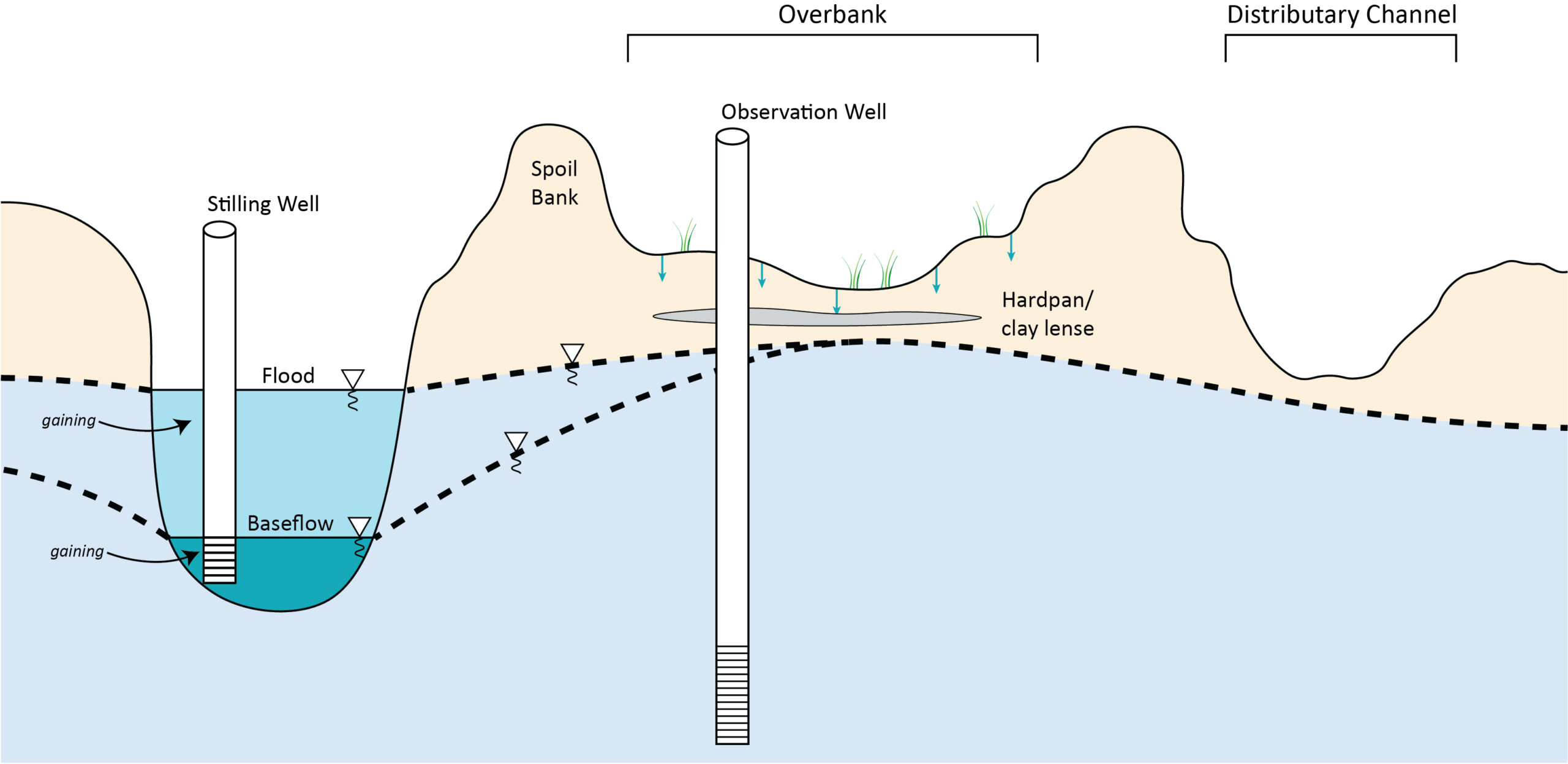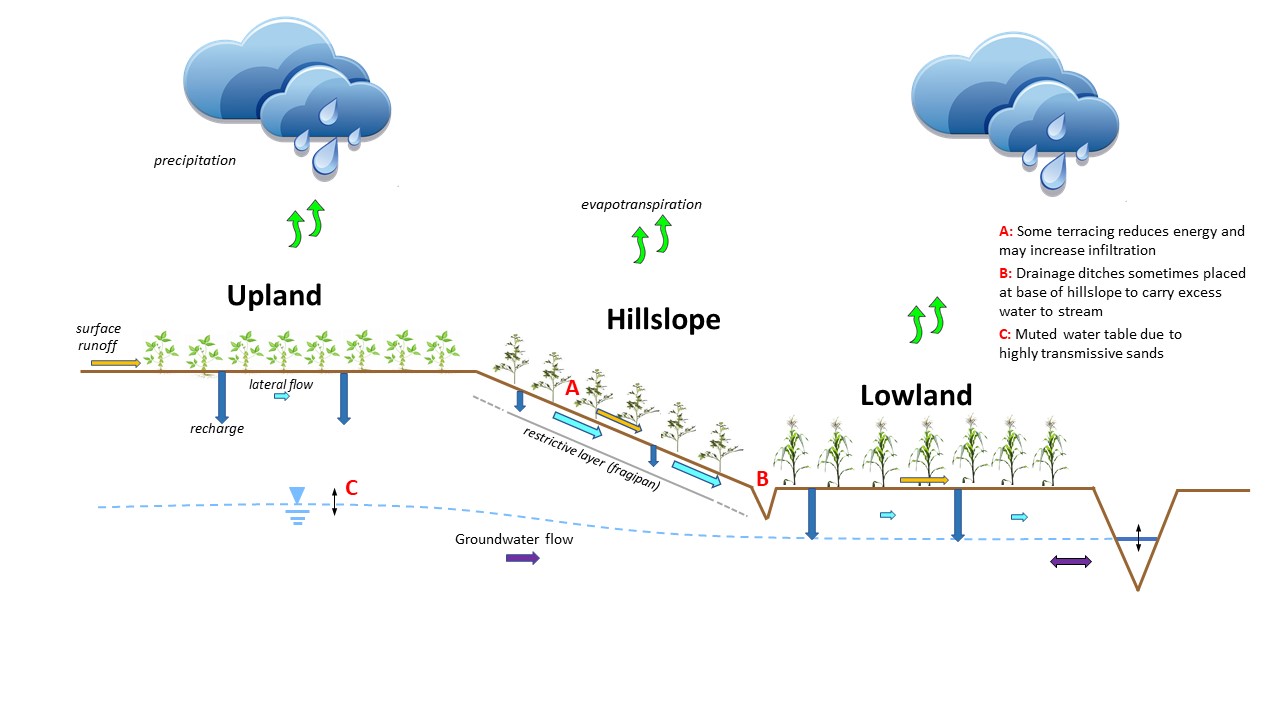What is Recharge?
Recharge is the process through which surface water reaches groundwater. This can happen when precipitation infiltrates to an aquifer or when surface water bodies, such as lakes, rivers, and wetlands directly exchange water with an aquifer. It is through this natural process that our drinking water source gets replenished. Water can also get transferred to the aquifers through the confining units (also called aquitards) in between, but recharge is generally described by the water inputs from precipitation and surface water bodies.
